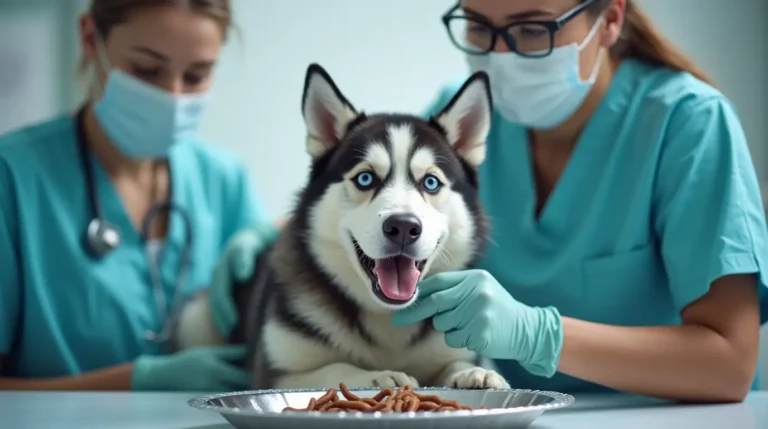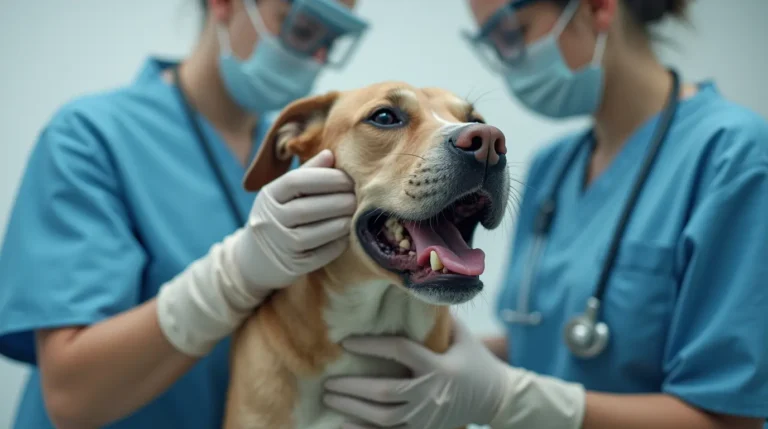Protect your furry friend from Canine Distemper: Learn the critical signs, prevention strategies, and expert care tips to safeguard your dog’s health.

Table of Contents
Canine distemper is a serious and potentially fatal viral disease that threatens the health of dogs worldwide. As a pet owner, understanding the signs, symptoms, and necessary actions can mean the difference between life and death for your beloved companion. This comprehensive guide will walk you through everything you need to know about canine distemper, empowering you with knowledge to protect and care for your four-legged friend.
What is Canine Distemper?
Canine distemper is a highly contagious viral disease that affects dogs, wolves, foxes, and other wildlife. Caused by the canine distemper virus (CDV), this serious condition attacks multiple body systems, including the respiratory, gastrointestinal, and nervous systems. The virus spreads through airborne exposure and direct contact with infected animals, making it a significant concern for pet owners and veterinary professionals.
Transmission Risks
- Airborne respiratory droplets
- Direct contact with infected animals
- Shared water and food bowls
- Contact with contaminated surfaces
6 Critical Signs of Canine Distemper
1. Respiratory Symptoms
Respiratory issues are often the first noticeable signs of canine distemper. Dogs may experience:
- Persistent coughing
- Nasal discharge
- Labored breathing
- Pneumonia-like symptoms
Warning: A dog with persistent respiratory symptoms should be examined by a veterinarian immediately.
2. Gastrointestinal Distress
The virus severely impacts the digestive system, causing:
- Vomiting
- Diarrhea
- Loss of appetite
- Significant weight loss
| Symptom | Potential Severity | Action Required |
| Vomiting | Mild to Severe | Veterinary Consultation |
| Diarrhea | Moderate to Critical | Immediate Hydration |
| Appetite Loss | Warning Sign | Nutritional Monitoring |
3. Neurological Complications
As the virus progresses, neurological symptoms become increasingly apparent:
- Seizures
- Muscle twitches
- Loss of coordination
- Head tilting
- Potential paralysis
4. Fever and Systemic Inflammation
Canine distemper typically triggers a significant immune response:
- High body temperature (103-106°F)
- Swollen lymph nodes
- General weakness
- Reduced activity levels
5. Ocular and Nasal Discharge
Distinctive eye and nose symptoms include:
- Thick, mucus-like discharge
- Watery eyes
- Crusty eye infections
- Potential conjunctivitis
6. Skin and Paw Pad Changes
Advanced stages may present dermatological symptoms:
- Thickened, hardened paw pads
- Skin rashes
- Potential secondary bacterial infections
Diagnostic Approaches
Veterinarians typically diagnose canine distemper through:
- Comprehensive physical examination
- Blood tests
- Viral antigen detection
- RT-PCR testing
- Clinical symptom assessment
Treatment Strategies
Veterinary Interventions
- Supportive care
- Intravenous fluids
- Antibiotics for secondary infections
- Seizure management
- Nutritional support
Preventive Measures
- Regular vaccination
- Limiting exposure to infected animals
- Maintaining proper hygiene
- Comprehensive wellness checks
Recommended Pet Products on Amazon
- Advanced Pet Disinfectant Spray
- Dog Immunity Boost Supplements
- Professional Veterinary First Aid Kit
- Portable Pet Isolation Carrier
Frequently Asked Questions (FAQs)
Q: Is canine distemper always fatal? A: Not always. With early detection and professional veterinary care, some dogs can recover, though long-term neurological impacts may persist.
Q: How quickly does the virus spread? A: Canine distemper can spread rapidly, often within 1-2 weeks of exposure.
Q: Can vaccinated dogs get distemper? A: While vaccination significantly reduces risk, no vaccine offers 100% protection.
Q: How long is a dog contagious? A: Infected dogs can spread the virus for several weeks, even after symptom onset.
Q: Are certain dog breeds more susceptible? A: Puppies and unvaccinated dogs are most vulnerable, regardless of breed.
Conclusion
Protecting your dog from canine distemper requires vigilance, education, and proactive healthcare. By recognizing early signs and maintaining regular veterinary care, you can significantly improve your dog’s chances of avoiding or surviving this serious condition.
Share Your Experience: Have you dealt with canine distemper? Leave a comment below and help other pet owners learn from your journey.
Explore More Pet Care Resources
Visit BlithePet.com for expert pet care guides, health tips, and comprehensive veterinary insights.
Disclaimer
This article is for informational purposes only and should not replace professional veterinary advice. Always consult with a licensed veterinarian for specific health concerns.





